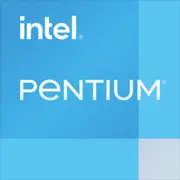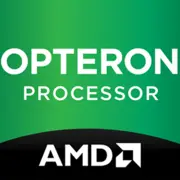장점
- 더 높은 제조 공정: 14 nm (14 nm vs 32 nm)
- 더 높은 메모리 유형: DDR4-2133/2400 | DDR3L-1333/1600 @ 1.35V (DDR4-2133/2400 | DDR3L-1333/1600 @ 1.35V vs DDR3)
- 최신 출시일: January 2017 (January 2017 vs November 2012)
- 더 전체 코어 개수: 16 (2 vs 16)
- 더 큰 L3 캐시: 8MB per die (3 MB vs 8MB per die)
기초적인
Intel
라벨 이름
AMD
January 2017
출시일
November 2012
Desktop
플랫폼
Server
G4600T
모델명
?
인텔 프로세서 번호는 프로세서 브랜드, 시스템 구성, 시스템 수준 벤치마크와 함께 컴퓨팅 요구 사항에 적합한 프로세서를 선택할 때 고려해야 할 여러 요소 중 하나일 뿐입니다.
Opteron 6366 HE
Kaby Lake
코어 아키텍처
Abu Dhabi
-
세대
Opteron (Abu Dhabi)
CPU 사양
2
전체 코어 개수
?
코어는 단일 컴퓨팅 구성 요소(다이 또는 칩)에 있는 독립적인 중앙 처리 장치의 수를 설명하는 하드웨어 용어입니다.
16
4
전체 스레드 개수
?
해당하는 경우 인텔® 하이퍼 스레딩 기술은 성능 코어에서만 사용할 수 있습니다.
16
3.00 GHz
기본주파수
-
-
성능 코어 기본 주파수
1.8 GHz
-
성능 코어 터보 주파수
?
Intel® 터보 부스트 기술에서 파생된 최대 P-코어 터보 주파수.
3.1 GHz
Yes
Intel Hyper-Threading Technology
?
Intel® Hyper-Threading Technology (Intel® HT Technology) delivers two processing threads per physical core. Highly threaded applications can get more work done in parallel, completing tasks sooner.
-
No
Intel Turbo Boost Technology
?
Intel® Turbo Boost Technology dynamically increases the processor's frequency as needed by taking advantage of thermal and power headroom to give you a burst of speed when you need it, and increased energy efficiency when you don’t.
-
-
L1 캐시
768K
-
L2 캐시
16MB
3 MB
L3 캐시
8MB per die
-
잠금 해제된 곱셈기
No
-
곱셈기
9.0
-
버스 주파수
200MHz
FCLGA1151
소켓
?
소켓은 프로세서와 마더보드 사이의 기계적, 전기적 연결을 제공하는 구성 요소입니다.
AMD Socket G34
14 nm
제조 공정
?
리소그래피는 집적 회로를 제조하는 데 사용되는 반도체 기술을 말하며, 반도체 위에 구축된 형상의 크기를 나타내는 나노미터(nm) 단위로 보고됩니다.
32 nm
35 W
전력 소비
85 W
92°C
최고 온도
?
접합 온도는 프로세서 다이에서 허용되는 최대 온도입니다.
-
-
PCIe 버전
?
PCI Express는 고속 직렬 컴퓨터 확장 버스 표준으로, 고속 컴포넌트를 연결하는 데 사용되며, AGP, PCI 및 PCI-X와 같은 이전 표준을 대체합니다. 처음 출시 이후 여러 번의 개정과 개선이 이루어졌습니다. PCIe 1.0은 2002년에 처음 도입되었으며, 높은 대역폭에 대한 요구를 충족시키기 위해 시간이 지남에 따라 후속 버전이 출시되었습니다.
2
3.0
PCI 익스프레스 버전
?
PCI Express 개정판은 PCI Express 표준의 지원되는 버전입니다. Peripheral Component Interconnect Express(또는 PCIe)는 하드웨어 장치를 컴퓨터에 연결하기 위한 고속 직렬 컴퓨터 확장 버스 표준입니다. 다양한 PCI Express 버전은 다양한 데이터 속도를 지원합니다.
-
16
PCI Express 레인 수
?
PCI Express(PCIe) 레인은 데이터 수신용과 데이터 전송용의 두 개의 차등 신호 쌍으로 구성되며 PCIe 버스의 기본 단위입니다. 최대 PCI Express 레인 수는 지원되는 레인의 총 수입니다.
-
Yes
Intel 64
?
Intel® 64 architecture delivers 64-bit computing on server, workstation, desktop and mobile platforms when combined with supporting software.¹ Intel 64 architecture improves performance by allowing systems to address more than 4 GB of both virtual and physical memory.
-
64-bit
명령 집합
?
명령 집합은 CPU 내부에 저장된 하드 프로그램으로, CPU 작동을 안내하고 최적화합니다. 이러한 명령 집합을 통해 CPU는 더 효율적으로 작동할 수 있습니다. Intel 진영의 8086 명령 집합, ARM 진영의 RISC 명령 집합과 같은 다양한 명령 집합이 있는 CPU를 설계하는 제조사가 많습니다. x86, ARM v8, MIPS는 모두 명령 집합 코드입니다. 명령 집합은 확장 가능하며, 예를 들어, x86은 64비트 지원을 추가하여 x86-64를 만들었습니다. 특정 명령 집합과 호환되는 CPU를 개발하는 제조사는 명령 집합 특허 소유자로부터 권한이 필요합니다. 대표적인 예로는 Intel이 AMD에게 권한을 부여, 후자가 x86 명령 집합과 호환되는 CPU를 개발할 수 있게 한 경우가 있습니다.
-
Up to 1x16 | 2x8 | 1x8+2x4
PCI Express Configurations
?
PCI Express (PCIe) Configurations describe the available PCIe lane configurations that can be used to link to PCIe devices.
-
-
트랜지스터 개수
2.4 billions
메모리 사양
DDR4-2133/2400 | DDR3L-1333/1600 @ 1.35V
메모리 유형
?
인텔® 프로세서는 단일 채널, 듀얼 채널, 삼중 채널 및 플렉스 모드의 네 가지 유형으로 제공됩니다. 다중 메모리 채널을 지원하는 제품에서 채널당 다중 DIMM을 장착하는 경우 지원되는 최대 메모리 속도가 낮아질 수 있습니다.
DDR3
64 GB
최대 메모리 크기
?
최대 메모리 크기는 프로세서가 지원하는 최대 메모리 용량을 나타냅니다.
-
2
최대 메모리 채널
?
메모리 채널 수는 실제 적용을 위한 대역폭 작동을 나타냅니다.
-
8 GT/s
버스 속도
-
Yes
ECC Memory Supported
?
ECC Memory Supported indicates processor support for Error-Correcting Code memory. ECC memory is a type of system memory that can detect and correct common kinds of internal data corruption. Note that ECC memory support requires both processor and chipset support.
-
-
ECC 메모리 지원
No
GPU 사양
Intel® HD Graphics 630
GPU Name
-
-
통합 그래픽스
?
통합 GPU는 CPU 프로세서에 통합된 그래픽스 코어를 지칭합니다. 프로세서의 강력한 연산 능력과 지능적인 전력 효율 관리를 활용하여, 더 낮은 전력 소비로 뛰어난 그래픽 성능과 부드러운 응용 프로그램 경험을 제공합니다.
N/A
1.05 GHz
그래픽 주파수
?
그래픽 최대 동적 주파수는 동적 주파수 기능이 있는 인텔® HD 그래픽을 사용하여 지원할 수 있는 최대 기회적 그래픽 렌더링 클럭 주파수(MHz)를 나타냅니다.
-
350 MHz
Graphics Base Frequency
?
Graphics Base frequency refers to the rated/guaranteed graphics render clock frequency in MHz.
-
64 GB
Graphics Video Max Memory
-
Yes | at 60Hz
4K Support
-
12
DirectX Support
?
DirectX* Support indicates support for a specific version of Microsoft’s collection of APIs (Application Programming Interfaces) for handling multimedia compute tasks.
-
4096x2304@60Hz
Max Resolution (eDP - Integrated Flat Panel)
?
Max Resolution (Integrated Flat Panel) is the maximum resolution supported by the processor for a device with an integrated flat panel (24bits per pixel & 60Hz). System or device display resolution is dependent on multiple system design factors; actual resolution may be lower on your device.
-
4096x2304@60Hz
Max Resolution (DP)
?
Max Resolution (DP) is the maximum resolution supported by the processor via the DP interface (24bits per pixel & 60Hz). System or device display resolution is dependent on multiple system design factors; actual resolution may be lower on your system.
-
4096x2304@24Hz
Max Resolution (HDMI)
?
Max Resolution (HDMI) is the maximum resolution supported by the processor via the HDMI interface (24bits per pixel & 60Hz). System or device display resolution is dependent on multiple system design factors; actual resolution may be lower on your system.
-
3
Number of Displays Supported
-
여러 가지 잡다한
Yes
Intel Virtualization Technology (VT-x)
?
Intel® Virtualization Technology (VT-x) allows one hardware platform to function as multiple “virtual” platforms. It offers improved manageability by limiting downtime and maintaining productivity by isolating computing activities into separate partitions.
-
Yes
Intel Virtualization Technology for Directed I/O (VT-d)
?
Intel® Virtualization Technology for Directed I/O (VT-d) continues from the existing support for IA-32 (VT-x) and Itanium® processor (VT-i) virtualization adding new support for I/O-device virtualization. Intel VT-d can help end users improve security and reliability of the systems and also improve performance of I/O devices in virtualized environments.
-
Intel® SSE4.1 | Intel® SSE4.2
Intel Standard Manageability (ISM)
?
Intel® Standard Manageability is the manageability solution for Intel vPro® Essentials platforms and is a subset of Intel® AMT with out-of-band management over Ethernet and Wi-Fi, but no KVM or new life cycle management features.
-
Yes
Enhanced Intel SpeedStep Technology
?
Enhanced Intel SpeedStep® Technology is an advanced means of enabling high performance while meeting the power-conservation needs of mobile systems. Conventional Intel SpeedStep® Technology switches both voltage and frequency in tandem between high and low levels in response to processor load. Enhanced Intel SpeedStep® Technology builds upon that architecture using design strategies such as Separation between Voltage and Frequency Changes, and Clock Partitioning and Recovery.
-
Yes
Execute Disable Bit
?
Execute Disable Bit is a hardware-based security feature that can reduce exposure to viruses and malicious-code attacks and prevent harmful software from executing and propagating on the server or network.
-
3 MB
Cache
?
CPU Cache is an area of fast memory located on the processor. Intel® Smart Cache refers to the architecture that allows all cores to dynamically share access to the last level cache.
-
Yes
Intel AES New Instructions
?
Intel® AES New Instructions (Intel® AES-NI) are a set of instructions that enable fast and secure data encryption and decryption. AES-NI are valuable for a wide range of cryptographic applications, for example: applications that perform bulk encryption/decryption, authentication, random number generation, and authenticated encryption.
-
Yes
Intel Boot Guard
?
Intel® Device Protection Technology with Boot Guard helps protect the system’s pre-OS environment from viruses and malicious software attacks.
-
Yes
Intel Clear Video HD Technology
?
Intel® Clear Video HD Technology, like its predecessor, Intel® Clear Video Technology, is a suite of image decode and processing technologies built into the integrated processor graphics that improve video playback, delivering cleaner, sharper images, more natural, accurate, and vivid colors, and a clear and stable video picture. Intel® Clear Video HD Technology adds video quality enhancements for richer color and more realistic skin tones.
-
Yes
Intel Clear Video Technology
-
Yes
Intel VT-x with Extended Page Tables (EPT)
?
Intel® VT-x with Extended Page Tables (EPT), also known as Second Level Address Translation (SLAT), provides acceleration for memory intensive virtualized applications. Extended Page Tables in Intel® Virtualization Technology platforms reduces the memory and power overhead costs and increases battery life through hardware optimization of page table management.
-
Yes
Intel InTru 3D Technology
-
Yes
Intel OS Guard
-
4.4
OpenGL Support
?
OpenGL (Open Graphics Library) is a cross-language, multi-platform API (Application Programming Interface) for rendering 2D and 3D vector graphics.
-
Yes
Intel Quick Sync Video
?
Intel® Quick Sync Video delivers fast conversion of video for portable media players, online sharing, and video editing and authoring.
-
벤치마크
Geekbench 5 싱글 코어
Pentium G4600T
729
+64%
Opteron 6366 HE
444
Geekbench 5 멀티 코어
Pentium G4600T
1460
Opteron 6366 HE
3469
+138%
Passmark CPU 싱글 코어
Pentium G4600T
1772
+77%
Opteron 6366 HE
1003
Passmark CPU 멀티 코어
Pentium G4600T
3055
Opteron 6366 HE
5613
+84%
소셜 미디어에서 공유하기
또는 링크로 소개하기
<a href="https://cputronic.com/ko/cpu/compare/intel-pentium-g4600t-vs-amd-opteron-6366-he" target="_blank">Intel Pentium G4600T vs AMD Opteron 6366 HE</a>

